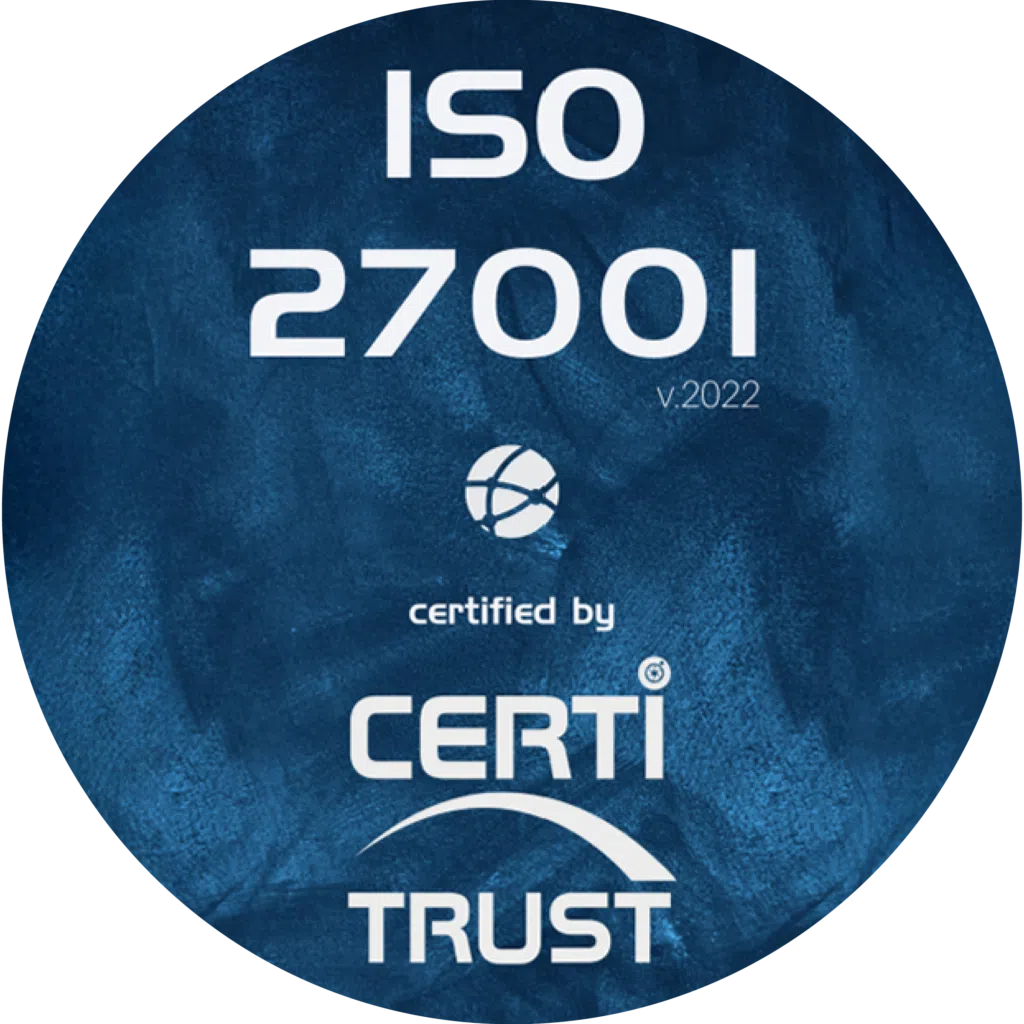Optimising lead times is an essential component of stock management for businesses. Shorter lead times can improve stock turns, reduce storage costs and increase overall profitability. This article explores the impact of lead times, key indicators for measuring their effectiveness, strategies for optimising them, and the technological tools available to improve your management and enable your business to implement effective inventory management.
The impact of lead times on stock rotation rates
Procurement lead times have a direct impact on stock rotation rates. The longer the lead time, the lower the stock rotation rate. This section examines the major impacts of lead times on stock management:
Inverse relationship between lead times and stock turns
Longer lead times force companies to maintain higher stock levels to avoid stock-outs, which reduces the frequency with which stocks are renewed and lowers the rate of stock turnover. On the other hand, shorter lead times mean that orders can be placed more frequently and in smaller quantities, thereby encouraging faster stock turnover.
Increased safety stock
Long lead times require a larger safety stock to cover unforeseen events. This increases the average stock level and reduces the turnover rate. A high safety stock level also ties up a significant proportion of the company’s capital, limiting the cash available for other investments.
Capital tied up
Longer lead times mean that capital is tied up in stock for longer before it is sold. This reduces liquidity and can create cash flow pressures, negatively impacting stock rotation.
Reduced agility
Long supply lead times limit a company’s ability to adapt quickly to fluctuations in demand. This can lead to overstocking or stock-outs, affecting turnover and customer satisfaction.
Increased dependence on forecasts
With long lead times, companies have to rely more heavily on long-term demand forecasts. This increases the risk of forecast errors and can lead to unsuitable stocks, either too high or too low.
Key indicators for measuring the effectiveness of lead times
To optimise lead times, it is essential to monitor certain key performance indicators (KPIs):
Lead time
Lead time is the time elapsed between placing an order and receiving the products. This time is used to plan replenishments and avoid stock-outs.
Example of calculation:
If a company orders products on 1 July and receives them on 10 July, the lead time is 10 days.
Lead time = (Receipt date – Order date) = 10 days
On-Time Delivery Rate
This indicator measures the percentage of orders delivered on time in relation to the total number of orders placed. A high on-time delivery rate indicates supplier reliability.
Sample calculation:
If out of 100 orders placed in a month, 90 are delivered on time, the on-time delivery rate is 90%.
On-timedelivery rate = [(Number of orders delivered on time / Total number of orders) X 100] = 90%
Stock rotation rate
The stock turnover rate measures the frequency with which stocks are renewed over a given period. A high rate indicates good supply management.
Example of calculation:
If a company has a cost of goods sold of €500,000 and an average stock of €125,000, the stock turnover rate is 4.
Inventoryturnover = (Cost ofgoods sold / Average stock) = (500 ,000 / 125,000) = 4
Safety stock
Safety stock is the quantity of additional stock maintained to cope with uncertainties in demand and supply lead times.
Example of calculation:
If a company has an average daily demand of 100 units and a lead time of 10 days, with a variation of 20 units per day, the safety stock is calculated as follows:
Safety stock = (Daily variation X Lead time) = (20 X 10) = 200 units
Stock-out rate
This KPI measures the frequency of stock-outs, indicating the performance of supply management.
Example of calculation:
If a company has 5 stock-outs in a month out of a total of 30 working days, the stock-out rate is 16.67%.
Out-of-stock rate = [(Number of days out of stock / Total number of days) X 100] = [(5 / 30) X 100] = 16.67%
Inventory Carrying Cost
Inventory Carrying Cost includes the costs of storage, insurance, handling and depreciation of stock. Shorter lead times can reduce these costs by reducing the stock levels required.
Sample calculation:
If annual storage costs are €10,000, insurance costs €2,000, handling costs €3,000, and inventory depreciation €1,000, the inventory carrying cost is €16,000.
Inventory carrying cost = (Storage Insurance Handling Depreciation) = (10000 2000 3000 1000) = €16,000
Product return rate
The product return rate measures the percentage of products returned in relation to the total number of products delivered. A high rate may indicate problems with the quality or conformity of the products delivered.
Example of calculation:
If a company delivers 1,000 products and records 50 returns, the product return rate is 5%.
Product return rate = [(Number of products returned / Total number of products) X 100] = [(50 / 1000) X 100] = 5%
Customer satisfaction rate
This KPI measures customer satisfaction with product availability and delivery times. Good management of supply lead times helps to improve this rate. It is often assessed using surveys or customer satisfaction scores (CSAT).
Example of calculation:
If a satisfaction survey shows that 80 out of 100 customers are satisfied with delivery times, the satisfaction rate is 80%.
Customer satisfaction rate = [(Number of satisfied customers / Total number of customers surveyed) X 100] = [(80 / 100) X 100] = 80%
Supplier compliance rate
This KPI measures the ability of suppliers to meet order specifications, including delivery times.
Example of calculation:
If a supplier meets order specifications for 95 out of 100 orders, the compliance rate is 95%.
Supplier compliance rate = [(Number of compliant orders / Total number of orders) X 100] = [(95 / 100) X 100] = 96%
Order cycle
The order cycle is the total time taken to process an order, from receipt to delivery. Reducing this cycle can improve the efficiency of procurement lead times.
Sample calculation:
If the total time taken to process an order is 15 days, the order cycle is 15 days.
Order cycle = (Order received date – Delivery date) = 15 days
By tracking these key indicators, companies can better assess and optimise their lead times, improving stock management and overall supply chain performance.
Optimise lead times to improve stock rotation
Optimising lead times is essential for improving stock rotation. Here are several concrete strategies for achieving this:
Just-in-time distribution
Adopting just-in-time distribution means synchronising purchases with actual sales. This method reduces the stock levels required and improves stock rotation by minimising waiting times and overstocking. By practising just-in-time distribution, companies can align their supplies with immediate demand, enabling more agile and responsive stock management.
Negotiations with suppliers
To reduce supply lead times, shorter delivery times need to be negotiated with suppliers. This can include setting up more frequent deliveries in smaller quantities, allowing stock levels to be adjusted more closely to actual requirements. Establishing automatic replenishment agreements can also ensure continuous availability of essential products, while avoiding stock-outs.
Improved demand forecasting
Predictive analysis tools play a key role in improving demand forecasting. Using historical data and advanced algorithms, these tools enablefuture needs to be anticipated with greater accuracy. Accurate forecasts make it easier to adjust orders in line with changes in demand, reducing lead times and optimising stock levels.
Efficient stock management
Proactive stock management involves regular stocktaking and real-time monitoring of stock movements. This enables slow-moving or dormant items to be identified quickly and corrective action taken. The use of high-performance inventory management software automates these processes and ensures complete visibility of stock levels, contributing to better management and optimisation of supplies.
Increased order frequency
Ordering more often in smaller quantities can improve stock rotation by reducing average stock levels. This strategy requires close coordination with suppliers to avoid the additional costs associated with multiple shipments. However, it allows for more flexible and responsive stock management, aligning supplies with immediate business needs.
Improved internal coordination
Fluid communication between the various departments (sales, purchasing, logistics) is essential for optimising supply lead times. Good coordination enables activities to be synchronised and to react quickly to changes in demand, minimising the risk of stock-outs or overstocking. The use of collaborative tools and integrated systems can facilitate this communication and improve the overall efficiency of supply processes.
Setting up an order tracking system
Implementing a real-time order tracking system like Weproc provides visibility on the status of supplies. This makes it possible to anticipate delays and take corrective action before problems affect operations. Effective order tracking helps to proactively manage lead times and optimise stock levels.
Supplier diversification
Diversifying supply sources reduces the risk of over-dependence on a single supplier and improves the resilience of the supply chain. Having several suppliers means that offers can be compared, better terms negotiated and delivery times reduced, while providing security of supply in the event of disruption at a particular supplier.
Optimising logistics
Reviewing and improving logistics processes, from the receipt of goods to their storage and preparation for delivery, is crucial to reducing lead times. Automating certain tasks, optimising transport routes and improving warehouse efficiency all help to speed up the flow of goods and minimise lead times.
Implementation of performance indicators
Regularly monitoring key performance indicators (KPIs) such as stock turnover, average lead times and stock-out rates helps to identify areas for improvement. Well-defined KPIs help to steer optimisation actions and measure progress. By monitoring these indicators, companies can adjust their strategies and continuously improve their lead times.
By implementing these strategies, companies can not only reduce their lead times, but also significantly improve their stock rotation rates, optimising their overall inventory management and increasing their profitability.
What technological tools can help optimise lead times?
To optimise lead times, the adoption of various technological tools is crucial. These tools make it possible to centralise information, improve visibility and coordinate processes more effectively.


ERP (Enterprise Resource Planning)
ERP systems integrate all aspects of business management, including purchasing, stocks, production and accounting. They provide an overview and facilitate coordination between different departments. With ERP, companies can track orders in real time, dynamically adjust forecasts and optimise procurement processes.
Benefits :
- Greater coordination between departments.
- Real-time visibility of the supply chain.
- Automation of order and stock management processes.
WMS (Warehouse Management System)
The WMS optimises warehouse management by automating the reception, storage, order preparation and dispatch processes. It enables goods flows to be managed efficiently, reducing order processing times and errors.
Benefits :
- Efficient management of incoming and outgoing stock.
- Reduces picking errors.
- Optimised use of storage space.
TMS (Transportation Management System)
The TMS manages the logistical aspects of transport, from route planning to delivery execution. It enables routes to be optimised, shipments to be tracked in real time and transport costs to be reduced.
Benefits :
- Optimisation of transport routes.
- Real-time tracking of shipments.
- Reduced transport costs.
APS (Advanced Planning System)
APS uses advanced algorithms to plan and optimise company flows, including production, transport and distribution. By integrating data from different systems, it enables informed decisions to be made to improve lead times.
Benefits:
- Optimised planning of company flows.
- Use of algorithms to improve processes.
- Data integration for informed decisions.
Cloud Computing
Cloud computing centralises and secures supply chain data, facilitating the sharing of information in real time between the various players. It improves coordination and responsiveness, reducing supply lead times.
Benefits :
- Data centralisation and security.
- Real-time information sharing.
- Improved coordination and responsiveness.
Weproc : Software for managing stocks, forecasting demand and managing orders
Weproc offers a complete solution for inventory management, demand forecasting and order management. This software centralises data, tracks incoming and outgoing products, generates replenishment alerts and interfaces with your tools to improve your overall management. By automating the ordering process and optimising processing times, Weproc enables companies to maintain optimal stock levels and reduce lead times.
Benefits :
- Tracking of incoming and outgoing products.
- Generates replenishment alerts.
- Automates the ordering process.
- Optimises order processing times.
- Interfaced with your tools.
Optimising lead times improves stock turnover and business performance. By adopting strategies such as just-in-time distribution, negotiating with suppliers and improving demand forecasts, companies can reduce lead times and the levels of stock required.
Weproc is positioned as an essential tool, offering integrated stock management, accurate demand forecasting and automated order tracking. With Weproc, companies can reduce storage costs, increase responsiveness and improve profitability.
Want to learn more about our Weproc procurement management software?
Contact us or request your 15-minute demo below!










